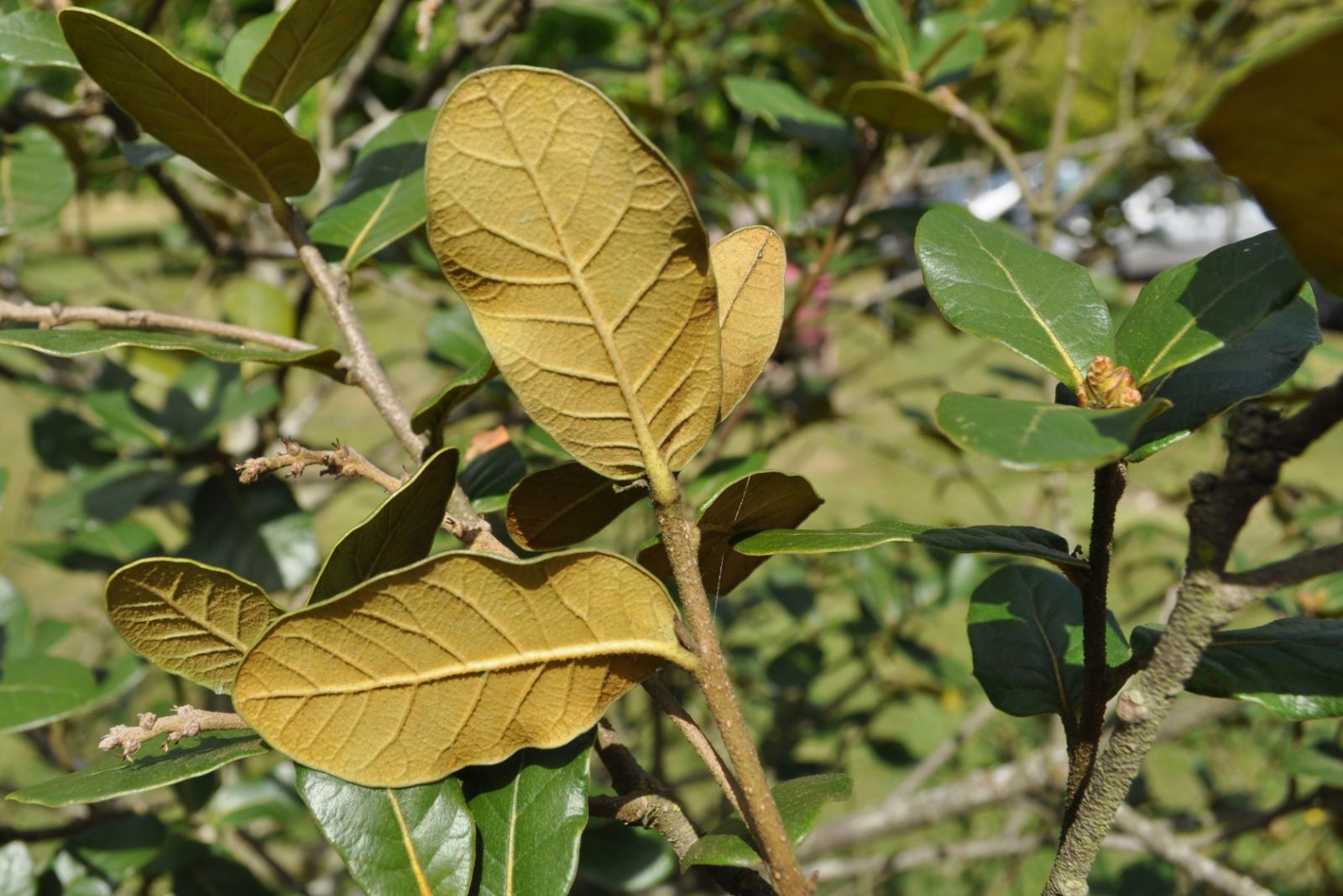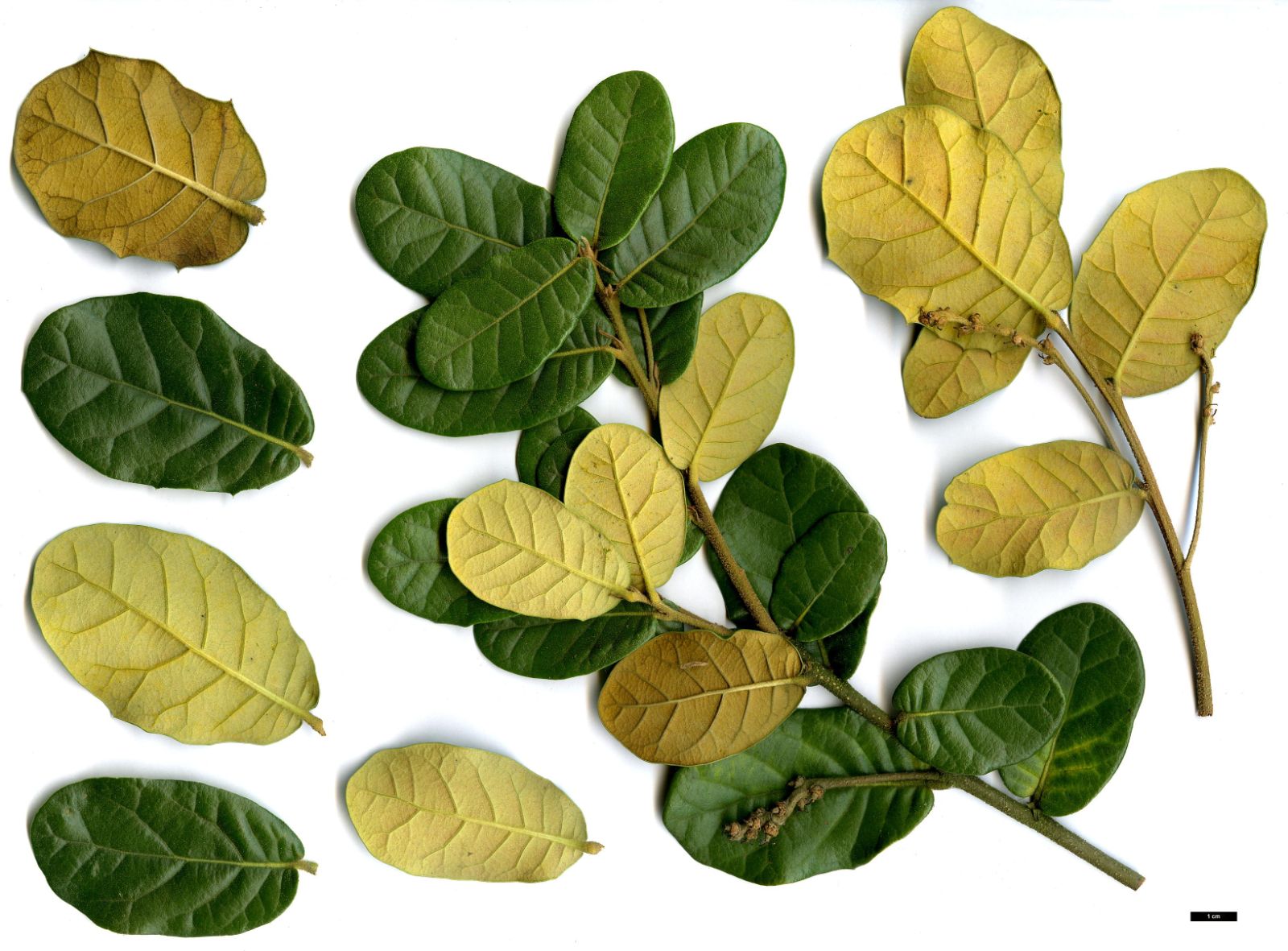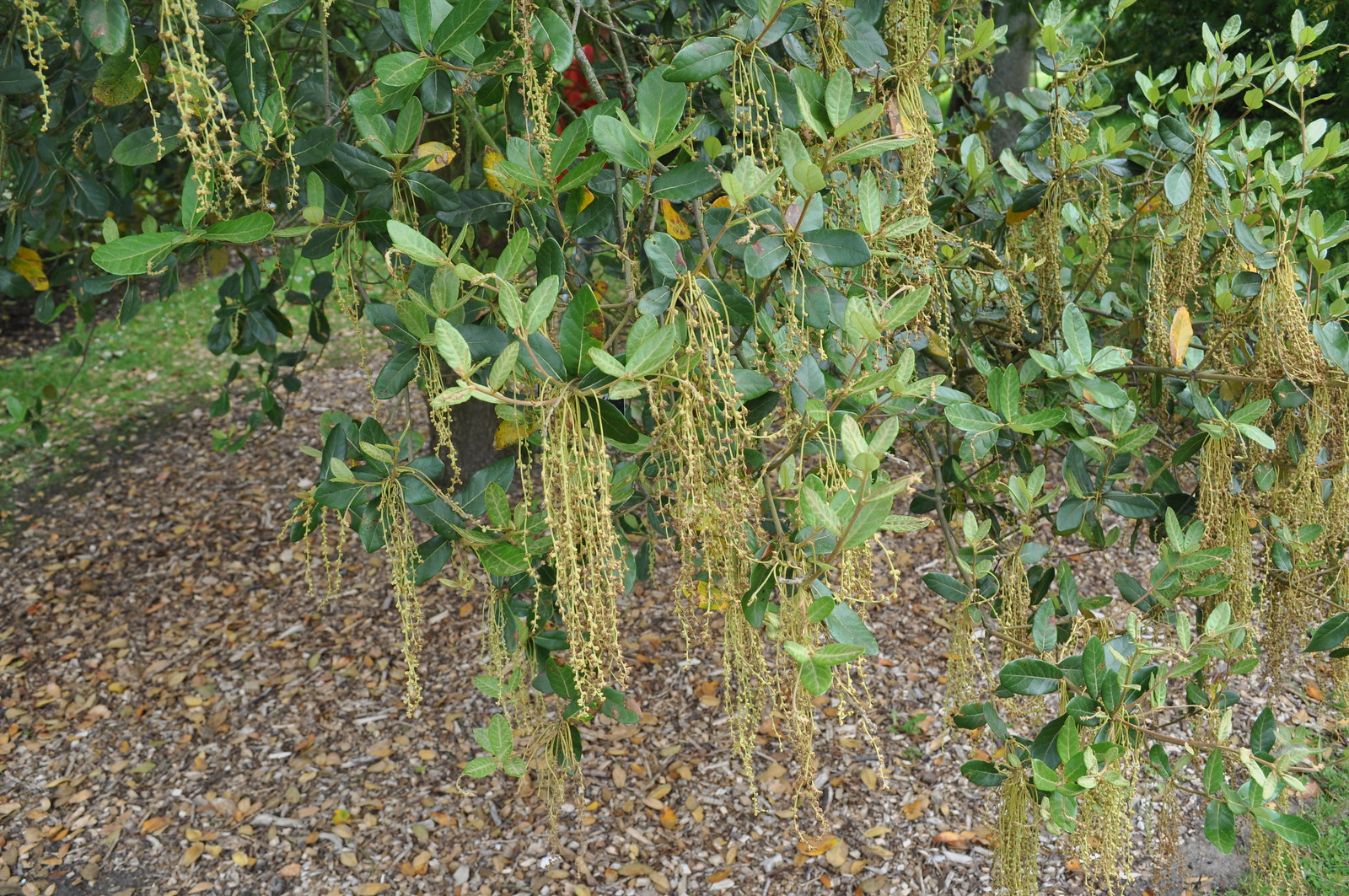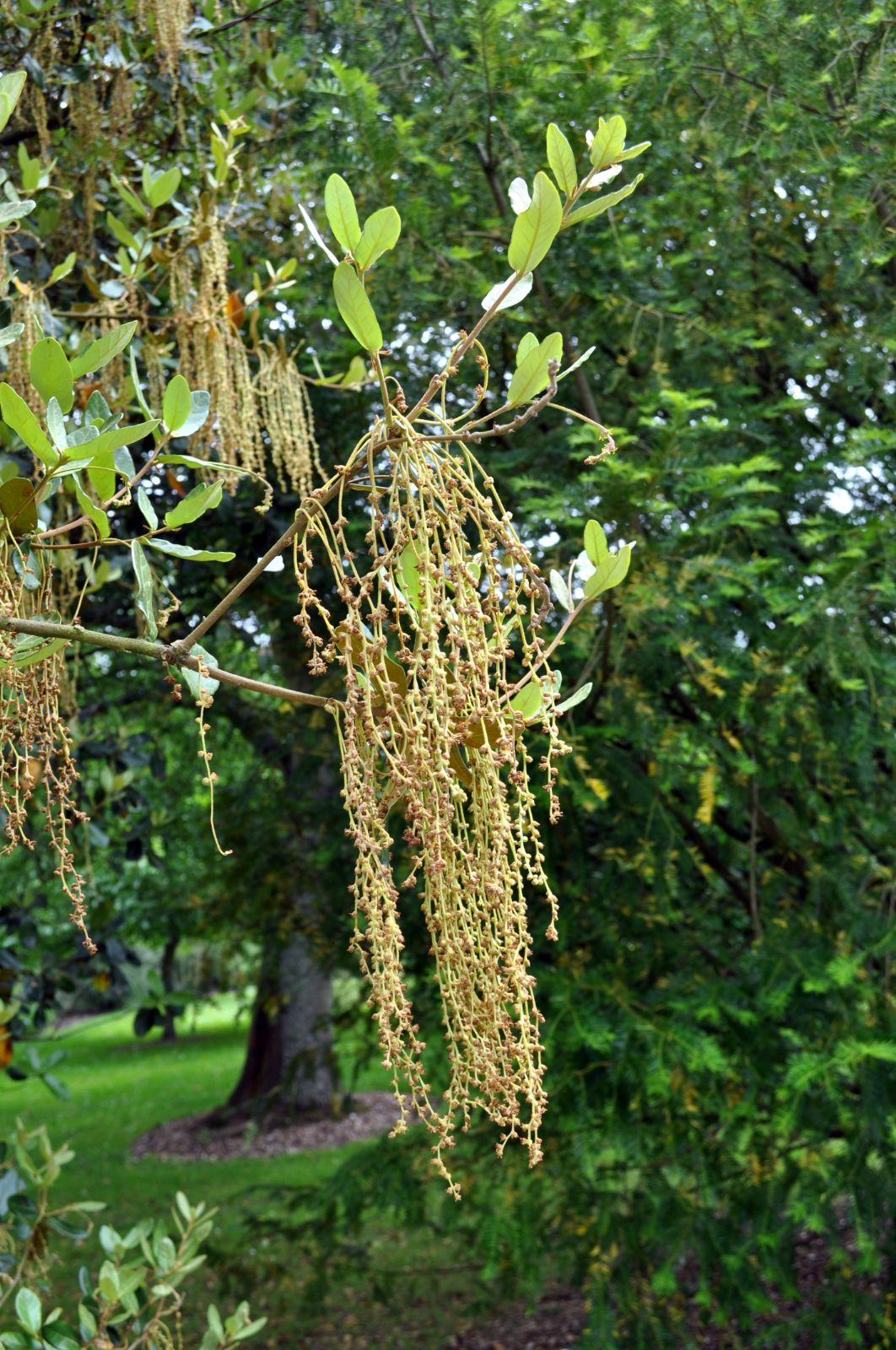Quercus longispica
Sponsor
Kindly sponsored by
The Trees and Shrubs Online Oak Consortium
Credits
Allen Coombes & Roderick Cameron (2021)
Recommended citation
Coombes, A. & Cameron, R. (2021), 'Quercus longispica' from the website Trees and Shrubs Online (treesandshrubsonline.
Genus
- Quercus
- Subgen. Cerris, Sect. Ilex
Other taxa in genus
- Quercus acerifolia
- Quercus acherdophylla
- Quercus acrodonta
- Quercus acuta
- Quercus acutifolia
- Quercus acutissima
- Quercus afares
- Quercus affinis
- Quercus agrifolia
- Quercus alba
- Quercus aliena
- Quercus alnifolia
- Quercus aquifolioides
- Quercus arizonica
- Quercus arkansana
- Quercus aucheri
- Quercus augustini
- Quercus austrina
- Quercus × auzendei
- Quercus baloot
- Quercus bambusifolia
- Quercus baronii
- Quercus bicolor
- Quercus brantii
- Quercus buckleyi
- Quercus canariensis
- Quercus canbyi
- Quercus candicans
- Quercus castanea
- Quercus castaneifolia
- Quercus cerris
- Quercus chenii
- Quercus chrysolepis
- Quercus coccifera
- Quercus cocciferoides
- Quercus coccinea
- Quercus conspersa
- Quercus crassifolia
- Quercus crassipes
- Quercus delavayi
- Quercus dentata
- Quercus deserticola
- Quercus dolicholepis
- Quercus douglasii
- Quercus dumosa
- Quercus durifolia
- Quercus eduardii
- Quercus ellipsoidalis
- Quercus emoryi
- Quercus engelmannii
- Quercus engleriana
- Quercus euboica
- Quercus eugeniifolia
- Quercus fabri
- Quercus faginea
- Quercus falcata
- Quercus floribunda
- Quercus frainetto
- Quercus franchetii
- Quercus fruticosa
- Quercus fusiformis
- Quercus gambelii
- Quercus garryana
- Quercus geminata
- Quercus georgiana
- Quercus germana
- Quercus gilliana
- Quercus gilva
- Quercus glabrescens
- Quercus glauca
- Quercus graciliformis
- Quercus gravesii
- Quercus griffithii
- Quercus grisea
- Quercus guyavifolia
- Quercus hartwissiana
- Quercus hemisphaerica
- Quercus × hispanica
- Quercus hondae
- Quercus hypargyrea
- Quercus hypoleucoides
- Quercus ilex
- Quercus ilicifolia
- Quercus imbricaria
- Quercus incana
- Quercus infectoria
- Quercus insignis
- Quercus ithaburensis
- Quercus kelloggii
- Quercus × kewensis
- Quercus kiukiangensis
- Quercus laceyi
- Quercus laevis
- Quercus lamellosa
- Quercus lanata
- Quercus lancifolia
- Quercus laurifolia
- Quercus laurina
- Quercus × leana
- Quercus leucotrichophora
- Quercus × libanerris
- Quercus libani
- Quercus lobata
- Quercus lobbii
- Quercus lodicosa
- Quercus longinux
- Quercus look
- Quercus × ludoviciana
- Quercus macranthera
- Quercus macrocalyx
- Quercus macrocarpa
- Quercus macrolepis
- Quercus marilandica
- Quercus mexicana
- Quercus michauxii
- Quercus mongolica
- Quercus monimotricha
- Quercus montana
- Quercus morii
- Quercus muehlenbergii
- Quercus myrsinifolia
- Quercus myrtifolia
- Quercus nigra
- Quercus × numidica
- Quercus oblongifolia
- Quercus obtusata
- Quercus oglethorpensis
- Quercus oxyodon
- Quercus pagoda
- Quercus palmeri
- Quercus palustris
- Quercus pannosa
- Quercus parvula
- Quercus petraea
- Quercus phellos
- Quercus phillyreoides
- Quercus planipocula
- Quercus poilanei
- Quercus polymorpha
- Quercus pontica
- Quercus prinoides
- Quercus pubescens
- Quercus pyrenaica
- Quercus rehderiana
- Quercus reticulata
- Quercus robur
- Quercus rotundifolia
- Quercus rubra
- Quercus rugosa
- Quercus rysophylla
- Quercus sadleriana
- Quercus salicina
- Quercus sartorii
- Quercus × schneideri
- Quercus schottkyana
- Quercus semecarpifolia
- Quercus senescens
- Quercus serrata
- Quercus sessilifolia
- Quercus setulosa
- Quercus shumardii
- Quercus sinuata
- Quercus spinosa
- Quercus stellata
- Quercus stenophylloides
- Quercus suber
- Quercus subspathulata
- Quercus tarokoensis
- Quercus tatakaensis
- Quercus texana
- Quercus tomentella
- Quercus trojana
- Quercus tungmaiensis
- Quercus turbinella
- Quercus × turneri
- Quercus undulata
- Quercus utahensis
- Quercus utilis
- Quercus uxoris
- Quercus variabilis
- Quercus velutina
- Quercus virginiana
- Quercus vulcanica
- Quercus warburgii
- Quercus wislizenii
- Quercus xalapensis
Tree to 25 m. Bark grey-brown, deeply ridged on mature trees. Young shoots covered in pale brown hairs, becoming smooth with age. Leaves evergreen, leathery, yellow-brown tomentose above when young becoming dark green and rough, covered with a yellow-brown tomentum beneath, up to 8 × 4 cm, elliptic-oblong to slightly obovate, rounded at the base, rounded or bluntly pointed at the apex, entire or with spine-toothed slightly revolute margins, veins up to 9 on each side of the midvein, impressed above, raised beneath. Petiole stout, tomentose at first becoming glabrous, 2–4 mm long. Infructescence and arching spike to 12 cm long with up to 6 or more cupules. Cupules thin-walled, to 1.2 cm long, the appressed scales edged with hairs. Acorns rounded, to 1 cm long, only the base or most of the acorn enclosed in the cup and ripening the following year. (le Hardÿ de Beaulieu & Lamant 2010; Hillier & Lancaster 2014).
Distribution China Sichuan, Yunnan
Habitat Mountain forests at 2260–4000 m asl.
USDA Hardiness Zone 7
Conservation status Least concern (LC)
Introduced in 1981 by Roy Lancaster (as Quercus semecarpifolia) from the valley of the Pi River, Sichuan, China (Lancaster 960). Quercus longispica is very distinct from other golden oaks in the long arching fruit clusters. At the Sir Harold Hillier Gardens, England, a plant from the original introduction has reached 10.7 m × 43.3 cm diameter (at 0.4 m) in 2020 (B. Clarke pers. comm.). It is among the latest flowering of all oaks, producing profuse male catkins up to 18 cm long in July (UK) and is worth growing just for that. The Hillier tree frequently produces acorns which appear to come true; seed and seedlings have been distributed from this plant and this is the origin of a plant at the Iturraran Botanical Garden, Spain.
An introduction from Yunnan was also made to the Sir Harold Hillier Gardens by John Rippin in 1999 (RIJ 204) and a plant from this collection is at Arboretum de la Bergerette, France, reaching 5.7 m in 2018 (S. Haddock pers. comm.). A plant at Arboretum des Pouyouleix, France, was raised from seed sent from Yunnan in 2012 and was a small, multistemmed plant in 2020 (B. Chassé pers. comm.).
The epithet means ‘with long spikes’, in reference to the long infructescence, from Latin longus = long + spica = ear of grain.










